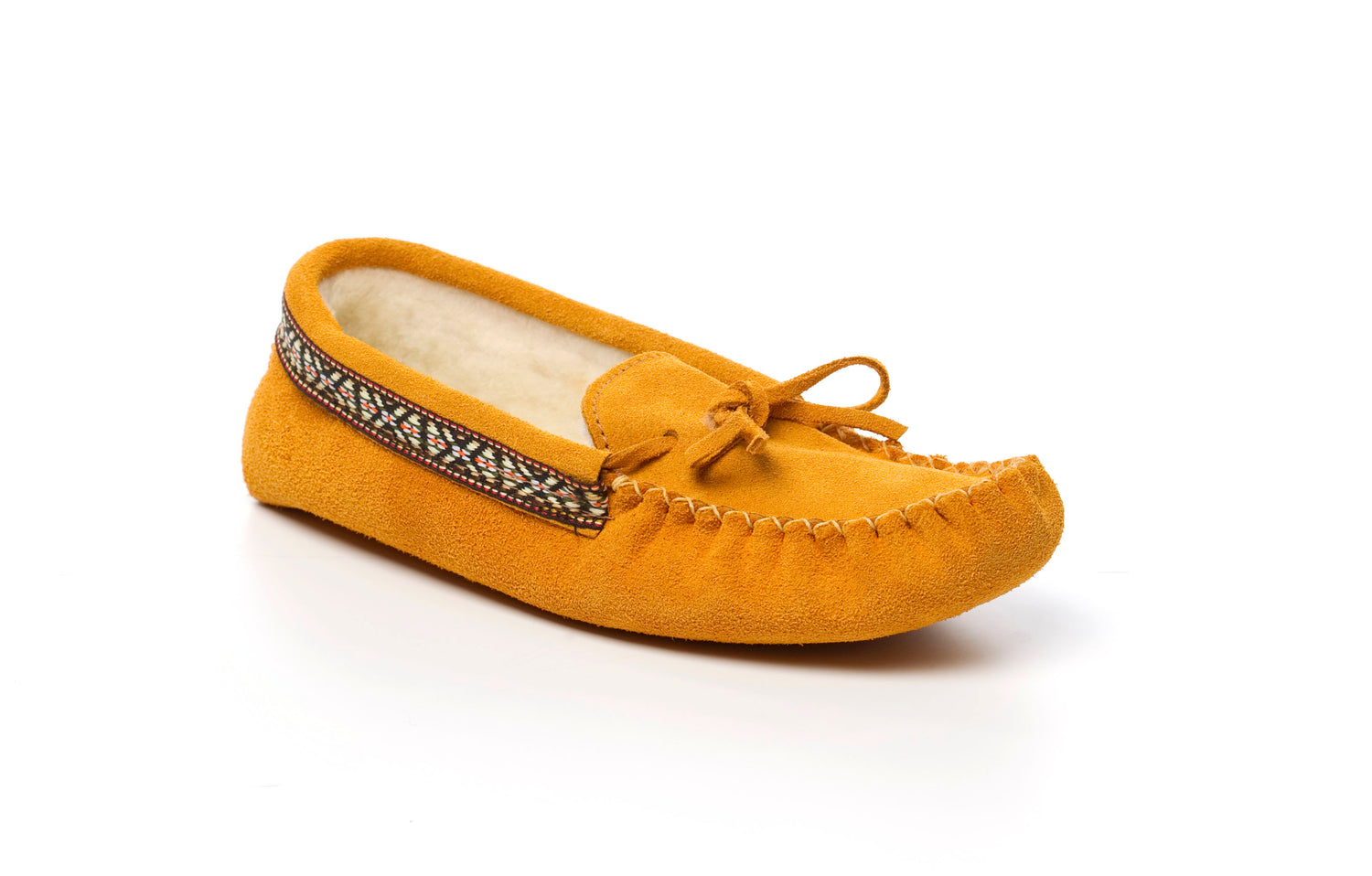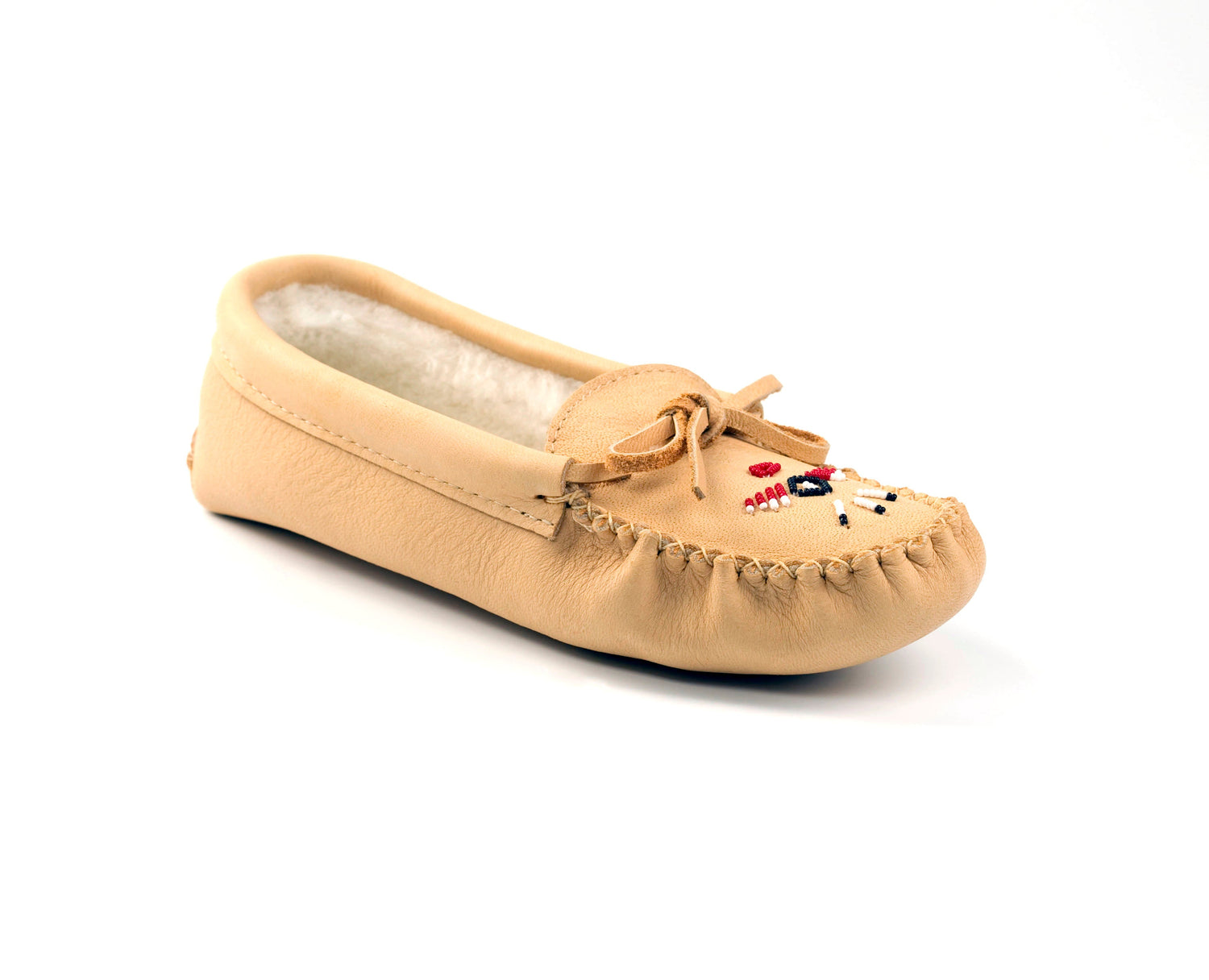
A Timeless Journey: Tracing the Unique History of Moccasins
Share
A Timeless Journey: Tracing the Unique History of Moccasins
The Foundation of Footwear
Long before the modern shoe rack, there was the moccasin. More than just footwear, the moccasin is a testament to human ingenuity and a deep connection to the land. Its story begins not in a factory, but in the hands of countless Indigenous artisans across North America, stretching back thousands of years. The very word "moccasin" is a generalized term derived from the Algonquian word makasin, simply meaning "shoe." This name, though now used widely, hints at the vast and distinct traditions from which the footwear evolved.
Early moccasins were a marvel of functional design. Crafted from a single piece of soft, supple animal hide—often deer, elk, or moose—they were sewn together with sinew to create a form-fitting second skin. This construction allowed the wearer to feel the ground beneath their feet, a critical advantage for stealthy hunters and for navigating the varied and often treacherous terrain of the continent. The design was fluid, adapting to the environment. Tribes of the Eastern Woodlands, who walked on soft, leaf-covered forest floors, developed soft-soled moccasins for quiet movement. In contrast, the Plains tribes, who traversed rocky and cactus-filled landscapes, crafted hard-soled moccasins from stiff rawhide to offer greater protection
The intricate art of moccasin-making was often passed down through generations, with each pair telling a story. Beading, quillwork, and other forms of decoration were not merely for aesthetic purposes. They could signify a person’s tribe, their social status, or even hold spiritual meaning. Symbols representing elements of nature, personal journeys, or sacred teachings were meticulously stitched into the leather, facing the wearer as a form of personal protection and spiritual connection. Moccasins were a canvas of identity, a personal narrative worn on the feet.
A Cultural Exchange and the Rise of a New Category
When European explorers and settlers arrived in North America, they found their traditional rigid, heeled shoes were poorly suited for the new world's terrain and harsh winters. They quickly recognized the superior design and comfort of Indigenous moccasins. The practicality and warmth of these soft, flexible shoes led to a rapid cultural exchange. Europeans began to trade for and, eventually, learn how to make moccasins themselves. This was the beginning of the moccasin's transformation from a purely Indigenous artifact to a recognized and sought-after form of footwear.
This adoption and adaptation by Europeans did not dilute the moccasin's unique identity; rather, it cemented it as a footwear category of its own. Unlike the stiff leather boots of the Old World, moccasins offered a freedom and flexibility that was revolutionary. They provided protection without sacrificing the ability to "feel" the ground, a concept at the heart of their original design. This crucial distinction set them apart from all other shoes. They were neither a dress shoe nor a work boot, but a new kind of comfort-driven, versatile footwear.
As the years passed and the world became more interconnected, the moccasin continued to evolve. The introduction of glass beads and new materials through trade routes led to an explosion of color and intricate new designs. The artistry became even more elaborate, with distinct regional and tribal styles emerging, so much so that one could often identify a person's tribe simply by their footwear. This era also saw the rise of moccasins as an early form of "tourist art," as they were made and sold at popular destinations like Niagara Falls. While this commercialization moved them into a new market, the core principles of craftsmanship and unique design remained.
The Modern Moccasin and its Enduring Legacy
Today, the moccasin exists in a class of its own. It has transcended its origins while retaining the foundational principles of its design. The classic, soft-soled moccasin has found its most popular contemporary form as a slipper—an unparalleled choice for warmth and comfort. The double-padded sole and soft linings, like the warm fleece in some modern designs, are direct echoes of the need for comfort and insulation that inspired their earliest creation. They are a retreat for the feet, a way to connect with a sense of natural, uninhibited comfort.
However, the moccasin's influence extends far beyond the realm of indoor relaxation. Its unique construction has inspired a host of other footwear styles. The "moc-toe" boot, with its distinctive U-shaped stitching, is a nod to the gathered-toe construction of traditional designs, blending moccasin aesthetics with the durability of a work boot. The modern driving moccasin, with its flexible sole and rubber pods, directly translates the moccasin's original purpose of sensitive and connected movement into a contemporary context. Even the humble penny loafer and boat shoe owe a debt to the moccasin's slip-on, single-piece leather design.
Ultimately, moccasins are more than just a style of shoe; they are a philosophy of comfort and craftsmanship. They are a bridge between ancient traditions and modern living. While they may not be a boot or a sneaker, their legacy is in their ability to provide both a feeling of being grounded and a sense of effortless, natural comfort. They occupy a category all their own—a unique blend of history, artistry, and an enduring promise of coziness for the feet.



